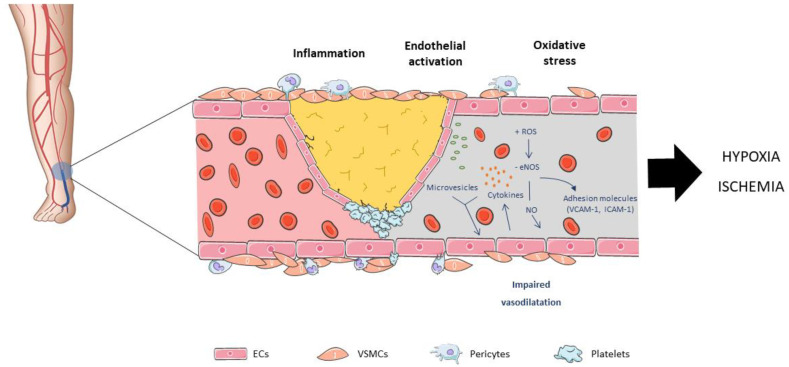Figure 1.
Peripheral arterial disease (PAD) is mainly caused by atherosclerosis. The earliest event is endothelium activation by adherence of mononuclear cells to endothelial cells (ECs), followed by an inflammatory cascade, the formation of fatty streaks and leading to atheroma plaque formation. Endothelial dysfunction entails a change in the synthesis and secretion of different substances and expression of diverse endothelial genes. Among them, monocyte chemoattractant protein-1, platelet-derived growth factors (PDGFs), platelet adhesion molecule-1, or endothelial nitric oxide synthase (eNOS). In the presence of hyperlipidemia, hypertension, smoking or diabetes, there is an increased oxidative stress, which promotes the synthesis of pro-atherogenic molecules such as cytokines and chemokines, interleukins, adhesion molecules, leading to an inhibition of eNOS activity, and consequently a reduction in nitric oxide bioavailability.

